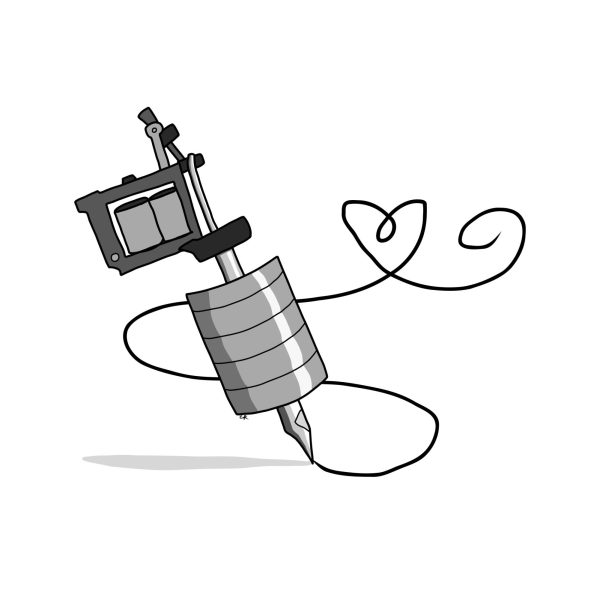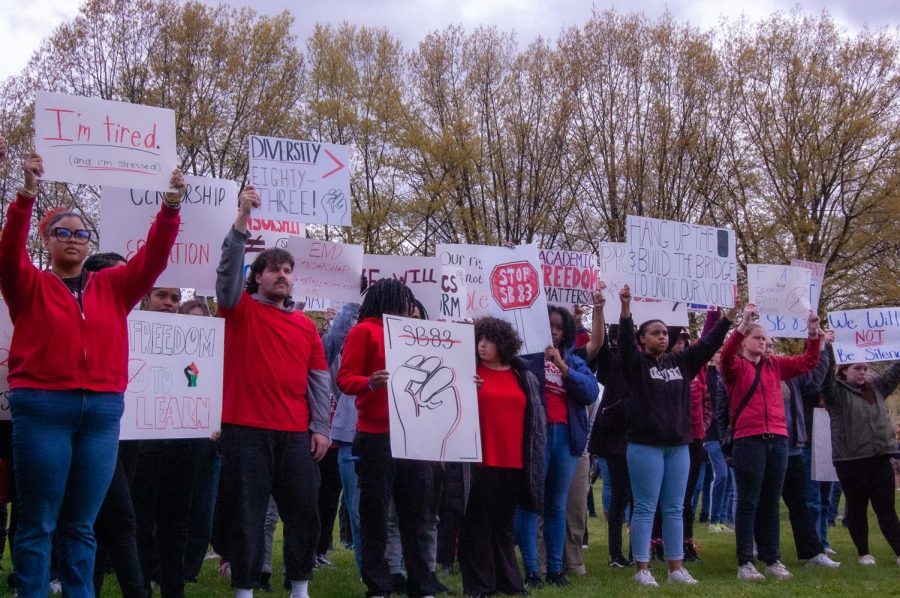Covered up with an itchy blouse that doesn’t quite fit, I fidget with the sleeves and struggle with the buttons. I look in the mirror, unable to recognize myself.
“It’ll have to do,” I whisper to myself, unsatisfied with my appearance. But it doesn’t really matter what I think – it matters what they think.

I call my mom on the way there, hoping for some relief as I can feel my nerves race up and down my body. Job interviews always get my blood pumping
“Did you make sure your tattoos are covered?” she asks.
Ah, the tale old as time. Tattoos in the workplace. That’s a big no-no, right?
Or is it?
When I first started getting tattoos when I was 18, my mom cautioned me about the effect they may have on my future career, or lack thereof, according to her.
In the past, tattoos were not seen as the most acceptable in the workplace, according to a 2022 article from Unsustainable Magazine, which was a deep dive into the ethics behind tattoos in the workplace. In fact, people with tattoos were stereotyped as rebels or outcasts, people you wouldn’t typically prefer to hire over that clean-skinned applicant with their skin bare and pure.
Tattoos, a form of self-expression and art, turned into a reason to deem someone unprofessional in the workplace.
However, the art of tattooing dates back all the way to 500 B.C. with almost all ancient cultures partaking in the practice including the Egyptians, Greeks and Romans,, according to Wellcome Collection, a free museum and library. The use of ink on the body was for a multitude of reasons, including religious beliefs, art and culture.
With a beautiful history of tattooing the body, the practice is now common and especially popular among millennials and Gen Z, who are credited for bringing a positive attitude about tattoos back after years of a negative stigma.
Approximately 40% of people aged 18-34 in the U.S. have at least one tattoo, according to statistics carried out by TeamStage. In comparison, the percentage of those with tattoos over the age of 50 is only 16%.
So with all these statistics, where do tattoos currently stand in the workplace?
Well, it’s still not great, but it is definitely better than it was a decade ago.
Seventy-six percent of people still feel as though visible tattoos can harm a candidate’s chances at a job interview, and only 12% of employees with tattoos don’t hide them.
I remember doing a Zoom interview for my first internship opportunity, and I whipped out a long sleeve, even though it was 90 degrees outside, accompanied by a large ring to cover up my finger tattoo. I shoved my septum piercing up my nose so it couldn’t be seen and looked in the mirror.
Man, I looked lame.

Now, I’m not saying I think you look lame if you don’t have tattoos or piercings, but for me, it made me feel confident. Pretty. Myself.
Having to hide all of that made me feel inferior, like I couldn’t be professional unless I tucked everything away.
Not to place blame on our elders for this negative view of tattoos or looking different in any capacity, but…I am blaming them.
The idea of someone coming into your workplace that looks completely different from you, or what they may think looks scary or unprofessional, is just terrifying to any old person.
In fact, many legal journals have stated there are currently no laws protecting those with tattoos from discrimination when getting hired, although it isn’t often that candidates are rejected for their tattoos.
Tattoos are only becoming more and more popular as the younger generations are making their way into the workforce.
One way or another, our generation of Gen Z will continue to fight stereotypes for one another, as I truly believe we are the most accepting generation to exist.
So, go get that tattoo. It only lasts…forever.
Grace Clarke is opinion editor.
Contact her at [email protected].




